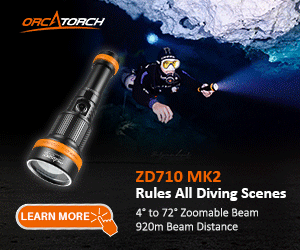As you have seen in the first 5 pages of this thread, there is a pretty strong consensus that there is no problem diving with aluminum tanks with a wetsuit. You just have to add weight when compared to steel.
What interests me is wondering where you heard it. You wrote that you got the information "mostly on this board." I have been a member of ScubaBoard for 18 years now, and I don't recall that idea being bandied about before. I am wondering if you may have misunderstood something.
A lot of people have a strong preference for steel tanks, but they have that preference whether diving with a wetsuit or a drysuit. I myself prefer steel tanks for the most part, but when I am diving on vacation in some tropical resort, I expect to use aluminum tanks and a wetsuit, and I don't give that a second thought.
A common misconception may possibly be in play here. When a tank loses 5 pounds of air during a dive, the diver (counting all the gear) will be 5 pounds more buoyant at the end of the dive. That is true regardless of the composition of the tank. Some people note that when an aluminum tank loses 5 pounds, it goes from negatively buoyant to positively buoyant. These people mistakenly think that makes a difference (the added weight takes care of that), and they will therefore advocate against aluminum.
Would it be possible to find some of the ScubaBoard posts that have led you to conclude that there is something wrong with diving with aluminum tanks when using a wetsuit?
I'm not going to name names because, as you say, I may have misinterpreted what was being said, but some quotes from threads I read or posted in at one point or another..
"It’s silly to dive AL80s in cold water due to all the lead you need."
"The defacto std steel cylinder is the HP100. Given you dive cold water I would recommend that as it will have better buoyancy characteristics over an Al80. By better meaning more negative thus requiring less weight on a belt (or wherever you put it)."
"For cold fresh water, steels are probably the way to go."
"aluminum is worse weight to capacity hence why steel is preferred. aluminum is popular for rental fleets because they are cheaper to buy in bulk and they tolerate corrosion/abuse better in tropical environments. the buoyancy difference does make aluminum 40/80 useful for deco/stage usage."
"Steel tanks provide more negative buoyancy than Aluminum. For example, you will need to add 5 lbs of lead to your weight belt to achieve the same buoyancy with an Al80 as you would get with a steel HP100.
"Steel also lasts at least twice as long as AL given even minimal care (i.e., rinse after saltwater dives, store somewhere dry, and keep at least a couple hundred psi in the tank so water can't get in)."
"The only real advantage of AL for single tank backmount is initial cost."
"In my experience, aluminium tanks are usually more common in warm places, where you dive in very thin suits and, therefore, you need less weight."
"AL80s are very nice in warm water with minimal exposure protection. In those instances steels can be a bit too negative. They also have better corrosion resistance to salt. If I always wore a thick wetsuit or a drysuit, the AL80s would never get used."
"I consider AL80s a very poor choice for cold water divers, especially people who own their tanks. I refuse to dive aluminums now unless they’re a deco or stage bottle."
"Not all diving is single tank diving. For a single tank in cold water, an AL80 is a horrible choice."



